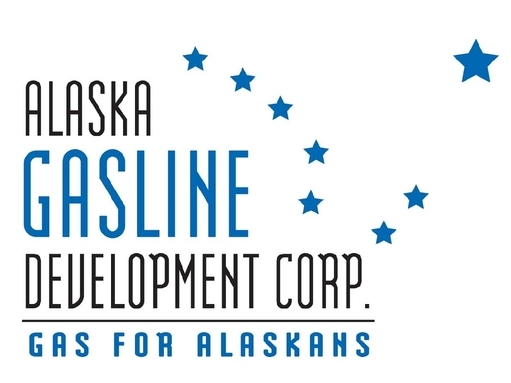Alaska gas line agency applies for permission to build LNG project

In what the Alaska gas line agency is calling a major achievement, officials on Thursday formally launched its application for federal permission to build a pipeline and other facilities to export North Slope gas.
The effort will be marked by the delivery, via truck, of some 58,000 pages of documents to the Federal Energy Regulatory Commission’s headquarters in Washington, D.C., on Monday.
FERC officials have said this will be the largest application they have ever received, involving the largest and most expensive project they have ever studied, said Frank Richards, senior vice president of program management for the Alaska Gasline Development Corp.
The 24-page application, with boxes of supporting documents, describes the Alaska LNG project as a $40 billion to $45 billion endeavor, Richards said. Current plans call for North Slope natural gas to be shipped in an 800-mile pipeline to Nikiski, where it can be super-chilled into liquefied natural gas and loaded into oceangoing tankers.
“This is a major milestone for this organization,” said Dave Cruz, AGDC chairman, shortly after the seven-member board unanimously agreed to apply.
Board member Hugh Short was absent.
FERC will take public comment associated with a draft environmental impact statement, and later issue a final impact statement. The documents, to be published by FERC, will spell out the project’s effects on the environment and would provide the basis for permitting decisions.
The state agency is asking for FERC’s blessing by the end of 2018. Skeptics say it will take much longer, if it ever comes.
“I don’t see it happening at all,” said Jeff Lowenfels, former president of Yukon Pacific Corp., which had its own project in the 1990s — the Trans-Alaska Gas System.
The Trans-Alaska Gas System had the distinction of being the only Slope export project in Alaska to ever receive FERC approval. That came more than 20 years ago, for a project that would have shipped liquefied natural gas out of Valdez. The TAGS project was never built.
Lowenfels said Alaska LNG will have major hurdles to overcome. Among them: the project has chosen Nikiski as the current export site, not Valdez, which FERC previously accepted as the preferred site.
“I wouldn’t call this a milestone,” he said. “Getting a permit will be the milestone.”
FERC is now seeking more information about the Valdez option, Richards said. In discussions one month ago, FERC officials said they wanted to know more about the environmental impacts the roughly 800-mile pipeline will have if it went to Valdez instead of Nikiski, said Richards, the state official.
The request came after another would-be gas line developer, the Alaska Gasline Port Authority, in February asked FERC to select Valdez over Nikiski, saying the Valdez route would save the state money and reduce environmental risks. The group, run by the city of Valdez and the Fairbanks North Star Borough, has long advocated for a North Slope gas project with the pipeline to Valdez.
One key question is how many acres of wetlands will be impacted by the pipeline route to Valdez, versus the one to Nikiski, Richards said. The work comparing the two routes can be done by pulling data from a federal wetlands inventory system rather than sending contractors into the field, he said.
The comparisons will be available in the draft environmental impact statement, Richards said. The state hopes FERC will issue that document in about a year.
AGDC President Keith Meyer has said the project would be delayed by years if the state must switch the pipeline route to Valdez and abandon the Nikiski route that Alaska LNG has already studied.
The state gas line agency and its former project sponsors, BP, ConocoPhillips and ExxonMobil, have already submitted more than 30,000 pages of documents to FERC. That paperwork was part of a dozen draft reports turned in last year, detailing the project’s impact on the environment, towns and cultural resources.
Those were filed as part of a preliminary process with FERC that began in September 2014. Officials have said those original reports are extremely detailed.
FERC replied to those draft resource reports with about 3,000 questions and comments provided by state and federal agencies. The state had originally expected to answer FERC’s questions by June.
But it accelerated the process, with roughly 75 people — AGDC employees and subcontractors — working nights, weekends and holidays to finish the job, Richards said. About 450 questions were from state agencies, and those will be answered as part of a state permitting process.
All the questions from the federal agencies were addressed, allowing AGDC to proceed with an application. But some questions will need additional follow-up. In some cases, fieldwork will be required this summer to validate answers, Richards said.
The application’s supporting documents include final resource reports and other permit applications AGDC is submitting to other federal agencies for their approval, such as the U.S. Army Corps of Engineers. The documents will be flown this weekend by courier to Washington, D.C., before they’re loaded into trucks, said Richards.
Digital copies must also be provided to FERC. Because the information is so “voluminous,” four people at computers will need three days to deliver it to FERC, Richards said.
Once submitted, all the information will be posted at the agency’s website, and provided to libraries in Alaska, state lawmakers and Alaska’s Congressional delegation.
The agency started the year with about $110 million left in its budget — money that should last at least through June 2018. The agency is keeping costs below budget, said Richards. In addition to marketing efforts to find gas buyers and project investors, it is focused on getting FERC authorization.
The application is a critical step, said Heidi Drygas, an AGDC board member and commissioner of the Alaska Department of Labor and Workforce Development.
Editor’s note: Jeff Lowenfels is also a weekly gardening columnist with Alaska Dispatch News.